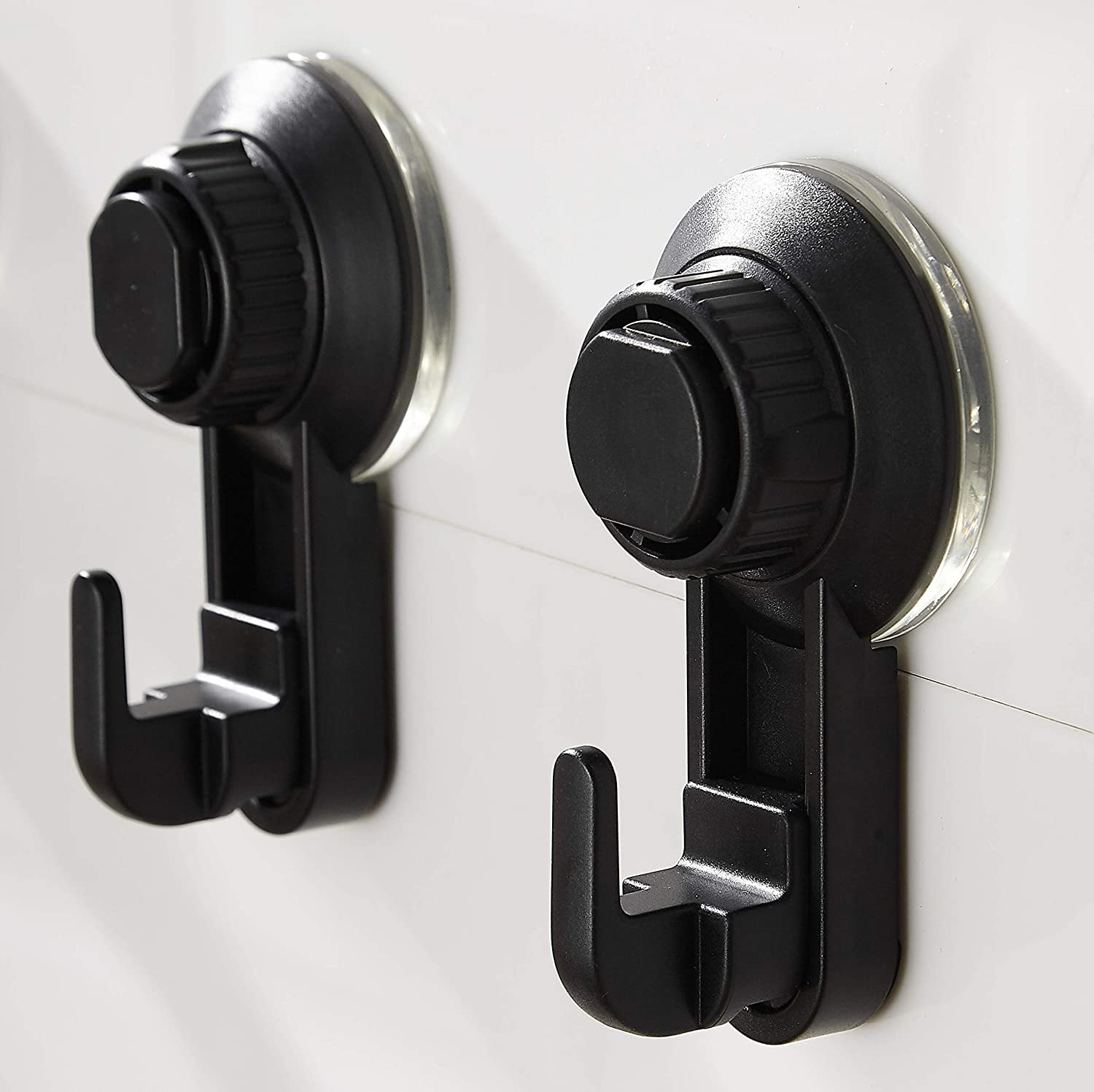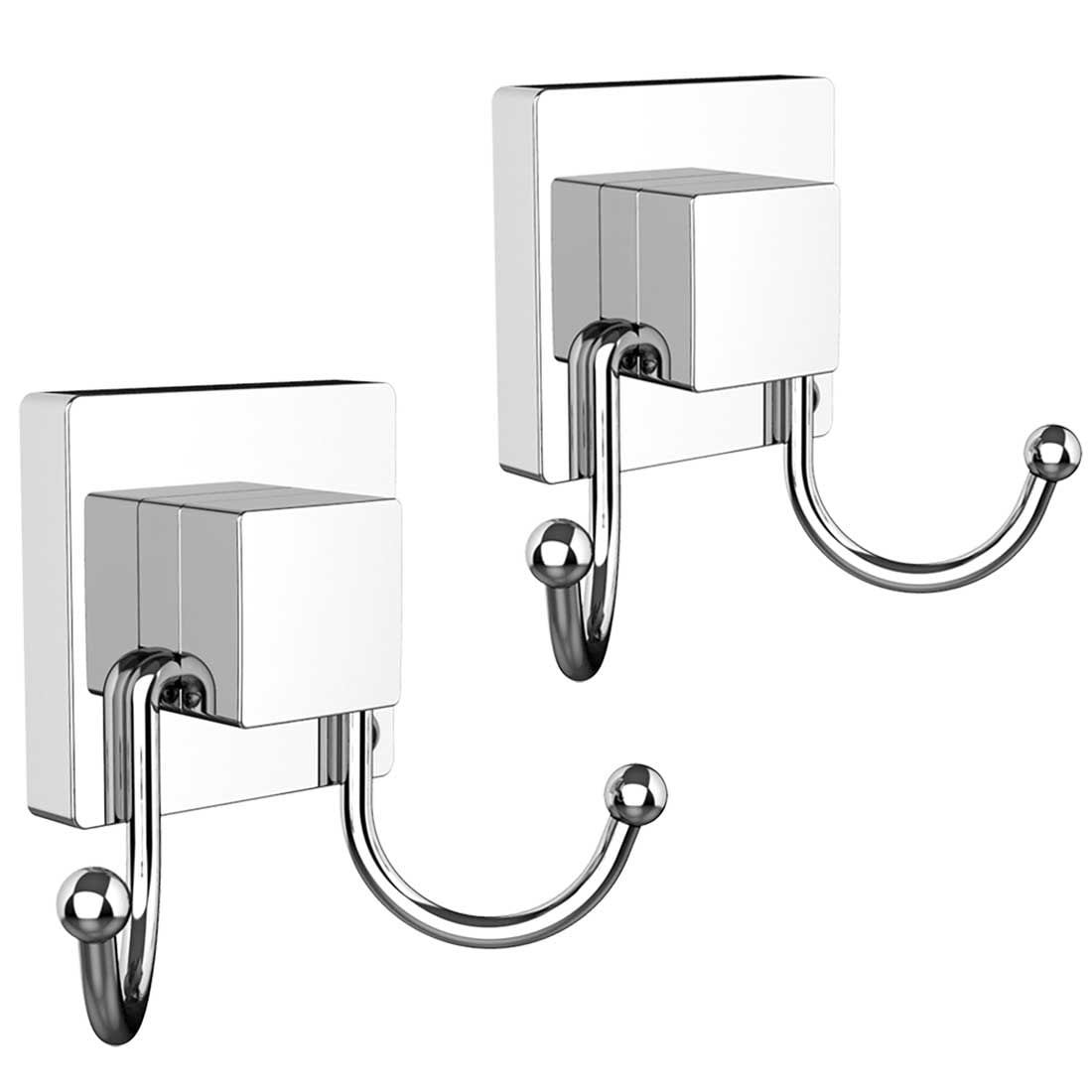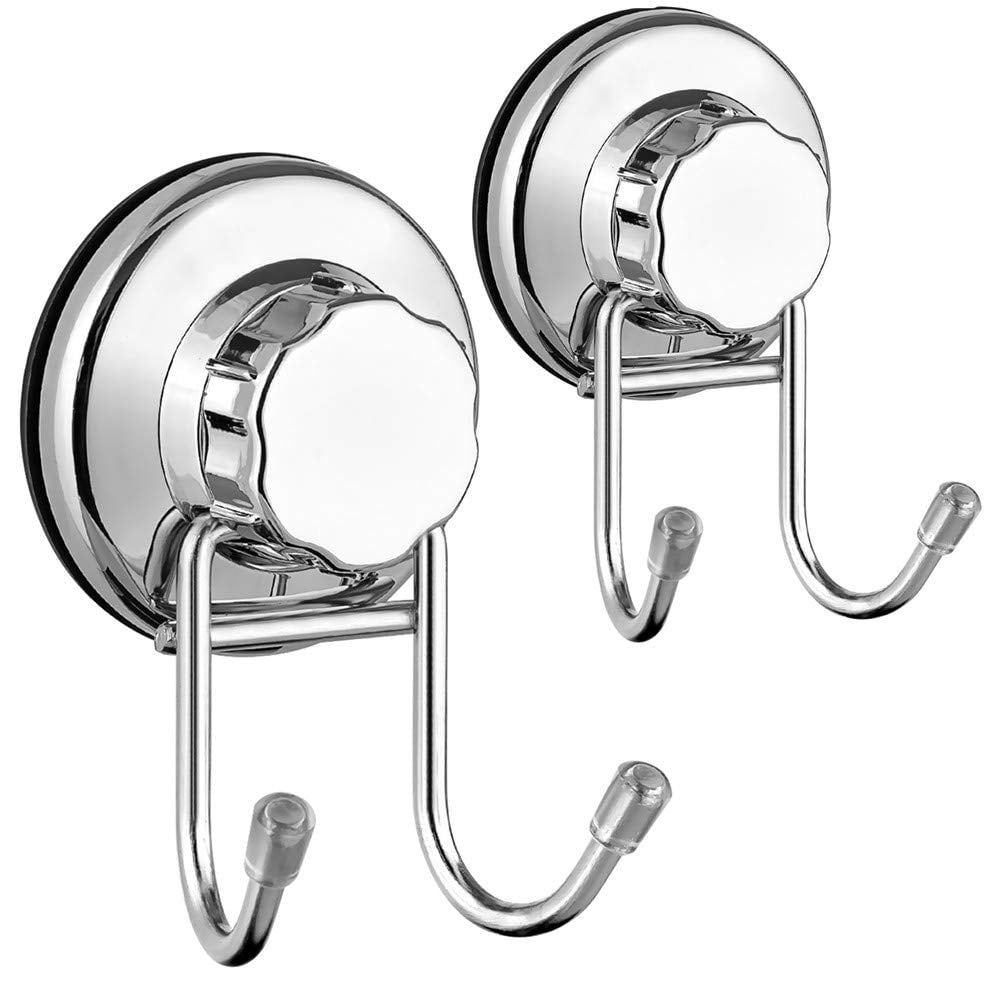Bathroom Shower Suction Hooks

Bathroom shower suction hooks are essential accessories for organizing and storing items in your bathroom. They provide a convenient and versatile solution for hanging towels, bathrobes, washcloths, and other bathroom essentials.
Types of Suction Hooks
Suction hooks come in various designs, materials, and sizes to cater to different needs and preferences. The most common types include:
- Plastic Suction Hooks: These are the most affordable and readily available options. They are typically made from durable plastic and feature a suction cup on the back. Plastic suction hooks are lightweight and easy to install, making them ideal for lighter items.
- Metal Suction Hooks: Metal suction hooks offer a more robust and stylish alternative. They are often made from stainless steel or chrome, which provides durability and resistance to rust. Metal suction hooks are suitable for heavier items, such as bathrobes or towels.
- Vacuum Suction Hooks: Vacuum suction hooks utilize a powerful vacuum seal to create a strong hold. They are typically made from plastic or metal and feature a larger suction cup that can be pressed against a smooth surface to create a vacuum. Vacuum suction hooks are ideal for hanging heavier items, such as shower caddies or organizers.
- Command Hooks: Command hooks are a popular option for their damage-free installation. They feature a special adhesive strip that allows them to be attached to a variety of surfaces, including walls, tiles, and glass. Command hooks are available in various sizes and styles, making them versatile for different bathroom needs.
Design Features of Suction Hooks
Suction hooks are designed with specific features to enhance their functionality and durability. Some common design features include:
- Suction Cup: The suction cup is the primary component of a suction hook. It is typically made from rubber, silicone, or plastic and is designed to create a seal against a smooth surface. The size and material of the suction cup can influence the holding strength of the hook.
- Hook Design: The hook design can vary depending on the intended use. Some hooks feature a single hook, while others have multiple hooks or a swiveling hook for added versatility.
- Locking Mechanism: Some suction hooks feature a locking mechanism that helps to secure the suction cup in place. This can prevent the hook from falling off the surface, especially when hanging heavier items.
- Material: The material of the suction hook can influence its durability and aesthetics. Plastic hooks are typically lightweight and affordable, while metal hooks offer a more robust and stylish option.
Strengths and Weaknesses of Different Suction Hook Designs
Different types of suction hooks have their own strengths and weaknesses, depending on their design and materials.
- Plastic Suction Hooks:
- Strengths: Affordable, lightweight, easy to install.
- Weaknesses: May not be suitable for heavy items, can lose suction over time, may not be as durable as metal hooks.
- Metal Suction Hooks:
- Strengths: Durable, rust-resistant, can hold heavier items.
- Weaknesses: More expensive than plastic hooks, may require a smooth surface for proper adhesion.
- Vacuum Suction Hooks:
- Strengths: Strong hold, suitable for heavy items, can be used on a variety of surfaces.
- Weaknesses: May require a smooth surface for proper adhesion, can be more difficult to install than other types of suction hooks.
- Command Hooks:
- Strengths: Damage-free installation, available in various sizes and styles, can be used on a variety of surfaces.
- Weaknesses: May not be suitable for heavy items, adhesive strips can lose their stickiness over time.
Types of Suction Hooks, Features, and Applications
| Type | Features | Applications |
|---|---|---|
| Plastic Suction Hooks | Lightweight, affordable, easy to install | Hanging towels, washcloths, lightweight bathroom accessories |
| Metal Suction Hooks | Durable, rust-resistant, can hold heavier items | Hanging bathrobes, towels, shower caddies |
| Vacuum Suction Hooks | Strong hold, suitable for heavy items, can be used on a variety of surfaces | Hanging shower caddies, organizers, heavy towels |
| Command Hooks | Damage-free installation, available in various sizes and styles, can be used on a variety of surfaces | Hanging towels, bathrobes, decorative items, bathroom accessories |
Installation and Use of Suction Hooks

Suction hooks are a versatile and convenient way to hang items in your bathroom shower, offering a simple and often temporary solution for storage and organization. They are particularly useful for hanging lightweight items like washcloths, razors, and bath toys. To ensure their effectiveness and longevity, it’s essential to understand the proper installation techniques and use considerations.
Installation of Suction Hooks
Proper installation is crucial for ensuring the secure adhesion of suction hooks. Here is a step-by-step guide:
- Clean the Surface: Before attaching the suction hook, thoroughly clean the shower wall surface with a mild detergent and warm water. Ensure the surface is completely dry before proceeding.
- Press Firmly: Place the suction cup firmly against the cleaned surface. Apply even pressure, ensuring that the entire suction cup makes contact with the wall.
- Twist or Pull: Depending on the design of the suction hook, either twist the hook clockwise or pull the lever to create a vacuum seal. This action will lock the hook in place.
- Test Adhesion: Gently tug on the hook to confirm its secure adhesion. If it feels loose, repeat steps 2 and 3 to ensure a tight seal.
Tips for Secure Adhesion, Bathroom shower suction hooks
Here are some additional tips to maximize the adhesion of suction hooks:
- Avoid Porous Surfaces: Suction hooks are most effective on smooth, non-porous surfaces like ceramic tiles, glass, and acrylic. Avoid using them on textured surfaces, as these may hinder the creation of a vacuum seal.
- Consider Temperature: Extreme temperatures can affect the adhesion of suction hooks. In hot showers, the heat can weaken the seal, making it prone to detachment. Ensure the shower surface is at room temperature before installation.
- Choose the Right Size: Select suction hooks that are appropriately sized for the weight of the items you intend to hang. Larger suction cups generally provide stronger adhesion.
- Avoid Overloading: Do not exceed the recommended weight limit for the suction hook. Overloading can cause the hook to detach and potentially damage the wall surface.
Common Installation Mistakes
Here are some common mistakes to avoid during the installation of suction hooks:
- Not Cleaning the Surface: Failure to clean the surface properly can result in poor adhesion, as dirt and grime can interfere with the creation of a vacuum seal.
- Insufficient Pressure: Not pressing the suction cup firmly against the surface can lead to a weak seal, making the hook prone to detachment.
- Ignoring the Twist or Pull Mechanism: Some suction hooks require a twisting or pulling action to create a secure seal. Neglecting this step can result in weak adhesion.
Recommended Weight Limits
The following table Artikels recommended weight limits for different types of suction hooks:
| Type of Suction Hook | Recommended Weight Limit |
|---|---|
| Small Suction Hook | 1-2 pounds |
| Medium Suction Hook | 3-5 pounds |
| Large Suction Hook | 5-10 pounds |
Note: The weight limits provided are estimates and may vary depending on the specific brand and design of the suction hook. It’s always advisable to err on the side of caution and choose a hook with a higher weight limit than necessary.
Maintenance and Troubleshooting: Bathroom Shower Suction Hooks

Proper maintenance and troubleshooting are essential for maximizing the lifespan and functionality of bathroom shower suction hooks. By following simple guidelines, you can ensure their continued adhesion and prevent common issues that may arise.
Cleaning and Maintenance
Regular cleaning is crucial for maintaining the adhesion of suction hooks. Over time, dirt, grime, and soap residue can accumulate on the suction cup, hindering its ability to create a strong seal. Here’s how to clean your suction hooks:
- Remove the suction hook: Gently pull the suction hook away from the wall. Avoid twisting or pulling forcefully, as this can damage the suction cup.
- Clean the suction cup: Wash the suction cup with warm, soapy water. You can use a soft-bristled brush to remove any stubborn dirt or grime. Avoid using abrasive cleaners or sponges, as these can scratch the suction cup.
- Clean the wall surface: Wipe the wall surface where the suction hook will be placed with a damp cloth. Ensure the surface is clean, dry, and free of any debris.
- Reattach the suction hook: Press the suction cup firmly against the clean wall surface. Ensure there are no air bubbles trapped between the suction cup and the wall.
Common Issues and Troubleshooting
While suction hooks are generally reliable, there are common issues that may arise, such as weak adhesion or leakage. Here are some troubleshooting steps for addressing these problems:
- Weak Adhesion:
- Clean the suction cup and wall surface: As mentioned earlier, dirt and grime can weaken the suction cup’s adhesion. Clean both the suction cup and the wall surface thoroughly.
- Check for air bubbles: If there are air bubbles trapped between the suction cup and the wall, the adhesion will be compromised. Press the suction cup firmly against the wall to remove any air bubbles.
- Ensure a smooth surface: Suction hooks work best on smooth, non-porous surfaces. Avoid using them on textured or uneven surfaces, such as wallpaper or painted walls with a rough finish.
- Try a different location: If the suction hook continues to have weak adhesion, try moving it to a different location on the wall. Some areas may have better adhesion than others.
- Leakage:
- Check for cracks or damage: Inspect the suction cup for any cracks or damage. If there are any, the suction cup may need to be replaced.
- Replace the suction cup: If the suction cup is damaged or worn out, replace it with a new one. Ensure the new suction cup is compatible with the hook.
Troubleshooting Table
| Issue | Solution |
|---|---|
| Weak adhesion | Clean the suction cup and wall surface, check for air bubbles, ensure a smooth surface, try a different location. |
| Leakage | Check for cracks or damage, replace the suction cup. |
Bathroom shower suction hooks are a practical solution for hanging towels and other essentials, but they can sometimes be a bit of an eyesore. If you’re looking for a more modern aesthetic, consider incorporating sleek storage solutions like floating shelves or open shelving units, as seen in the best modern bathrooms of 2017.
These designs not only offer storage but also contribute to a minimalist and sophisticated bathroom vibe, making those suction hooks seem less necessary.
Bathroom shower suction hooks are a convenient way to organize your shower essentials, but they can be prone to falling off if the surface isn’t clean. Mold growth on the bathroom ceiling can be a common issue, especially in humid environments.
If you’re dealing with mold, you’ll want to tackle it before it spreads further. Check out this comprehensive guide on the best way to kill mold on bathroom ceiling to ensure a clean and healthy environment. Once the mold is gone, you can confidently use your suction hooks to keep your shower organized and free of clutter.